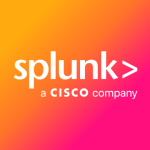We are using the SLA reporting, server monitoring and alerting, however the main and most important feature for Mangocam is the real time application performance and capacity reporting. We are also using plugins for memcached and database monitoring and alerting.
New Relic has changed the way we are dealing with application problems. It's the first place for our administrators to check if we encounter issues. In most cases, New Relic can immediately pinpoint the root cause of the issue, be it application errors, slow transactions, external services, database throughput or high transaction count. New Relic can monitor thresholds and alert if required. We are also using New Relic to help understand performance tests and bottlenecks.
Some of the 3rd party plugins could be improved - especially the requirement for java to monitor simple network services is not ideal. Also the pricing / plans may need restructuring as there is a big gap between the free offering and the first paid tier.
About three years for Mangocam.com, also at two other companies as IT consultant for the last 4 years.
We have used the PHP and Java monitoring modules as well as the server monitoring service without many problems. There was an initial glitch with the javascript injection on parts of our site, which has been sorted out quickly with the help of the New Relic support.
None so far. The service is very mature and very stable.
None so far. However, the amount of servers and services connected is limited.
Customer Service:
We only had to contact the support twice and in both cases the response time and professionalism were exceptional.
Technical Support:
The quality and expertise of the email support was very high, we have no complaints.
We have tried different services in the past, which only offered part of the features, but again New Relic is very different - complete product that just works.
Setting up New Relic is very easy and well documented. It's using the standard operating system packaging tools and is straightforward.
We implemented it in-house.
There is no measurable ROI as we are currently utilising the free plan / option.


















Helpful review:>)